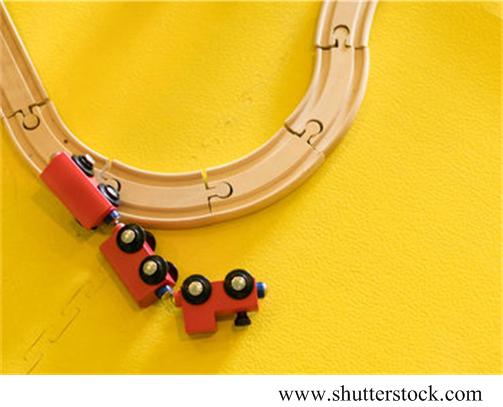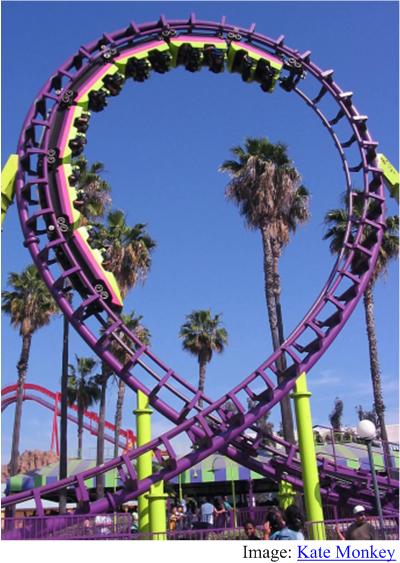 I thought it might be interesting to explore the mathematics of a common problem with a store-bought HO model train set that contains a collection of straight track segments and fixed-radius curved track segments that form a simple oval. Invariably an initial run of the train has it careening off the track when the train first meets the curved segment after running along the straight track segments.
I thought it might be interesting to explore the mathematics of a common problem with a store-bought HO model train set that contains a collection of straight track segments and fixed-radius curved track segments that form a simple oval. Invariably an initial run of the train has it careening off the track when the train first meets the curved segment after running along the straight track segments.
Why is that? Well of course the train is going too fast. But even if it slows down enough not to fall off the curve, it still jerks unstably and may derail when it first reaches the beginning of the curve. What is going on?
See the Train Wreck Puzzle
(Updates 9/18/2022, 10/20/2022) Others on Circular Looping Roller Coasters
(Update 9/18/2022) Circular Looping Roller Coaster
I came across this great example of the Train Wreck Puzzle in a different setting via TwisterSifter.
“Why Roller Coaster Loops Aren’t Actually Circular Anymore
If you’ve ever been on a modern looping roller coaster, you may be surprised to learn that when such “railways” were invented in the 1840s, they were painful, precarious, and not popular. Their biggest problem? The early loops were perfect circles. Watch and see how roller coaster engineers changed the loop’s design over time, trying different materials, adjusting the g-forces to exhilarating instead of nauseating, and introducing the clothoid loop.”
(Update 10/20/2022) DataGenetics Blog: Why are roller coaster loops not circular?
 I just came across another, more expansive, discussion of the problem with circular roller coasters, as well as purely circular curves in roads and railroad tracks, from the 2014 DataGenetics Blog by the late Nick Berry:
I just came across another, more expansive, discussion of the problem with circular roller coasters, as well as purely circular curves in roads and railroad tracks, from the 2014 DataGenetics Blog by the late Nick Berry:
“Many extreme roller coaster these days have vertical loops. Have you noticed that these loops are never circular? Why is this?
They all, also, seem to have the same similar ‘inverted teardrop’ appearance. Why is this?
Clearly there is the same physics and mathematics involved in their designs. Let’s take a look and see if we can derive a formula to describe their shape.”
